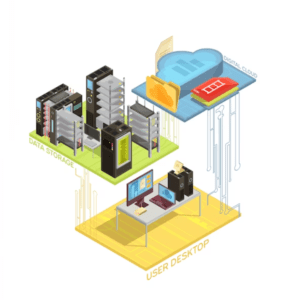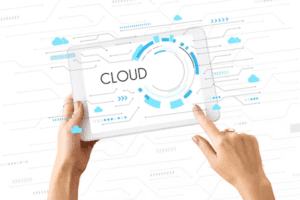The tech world is changing faster than ever and businesses need applications that can adapt to these changes seamlessly. Cloud-native application development allows developers to create services for the cloud. Cloud-based application development allows developers to design applications that can solve modern digital problems and provide better scalability and flexibility options.
In this article, we will explore some key principles and techniques behind developing these agile and efficient cloud-native applications. From containerization to Microservices, from DevOps practices to Infrastructure as a Code, we will cover it all. In the end, we will explore Nife, a cloud platform that embraces the ethos of cloud-native applications.
Key Principles of Cloud-Native Application Development

Cloud-based application development is changing the way applications are built and deployed in the cloud. Developers are now able to unlock new potentials of the cloud by creating more resilient, scalable, and efficient applications. In this section, we will explore the key principles of cloud-native application deployment.
Containerization
One of the most important principles of cloud-based application development is containerization. It involves the deployment of applications in an isolated environment to ensure the proper working of an application across different environments. The container encapsulates your application along with its dependencies for consistent behavior. Containers are lightweight, fast, and highly efficient.
Docker and Kubernetes are two important components for containerization. Docker creates and manages containers and allows you to keep your application and all its dependencies in the container image. The image contains everything your application needs to run. It ensures that your applications run consistently across all platforms regardless of the underlying infrastructure.
Whereas Kubernetes enables scaling, load balancing, and automated management of your container’s workload. It ensures proper working of your application so that you can focus on development.
Microservices Architecture

Another important principle of cloud-native application development is the adoption of microservices architecture. In microservices architecture complex applications are broken down into smaller manageable services. These services then can be developed, deployed, and scaled independently.
With this architecture, fault isolation is increased. As each service is responsible for a specific task any problem in any service will not affect any other services which is not the case in a monolithic architecture. Moreover, this architecture is ideal for scalability as resources can be provided to a specific service in case of increased demand.
DevOps Practices
Cloud-based application development requires collaboration between different services. This can be done by implementing DevOps practices. DevOps practices break silos between development and operation teams, increasing collaboration and continuous integration and deployment.
Continuous Integration (CI) ensures that changes made by developers are saved in the code repository. Continuous Deployment (CD) automates the release process enabling developers to roll out updates and new features frequently.
Infrastructure as Code (IaC) is another important aspect of DevOps practices. Infrastructure as Code enables automation, versioning, and consistency. It reduces the chances of any manual error and streamlines the whole process.
Techniques for Developing Cloud-Native Applications
Developing cloud-native applications requires leveraging some techniques to fully utilize cloud capabilities. Here are some techniques that will enable you to develop robust cloud-native applications.
Cloud Native Design Patterns:
Design patterns play a very important role in cloud-native applications for scalability, fault tolerance, and efficiency. Design patterns solve many important problems faced by developers daily. That is why it is important to implement design patterns. Here we have discussed some.
Circuit breaker pattern: It helps manage dependencies between services. It prevents potential failures and provides a fallback option when a service is unavailable. This pattern is very useful when integrating external services.
Auto Scaling Pattern: It helps in load balancing by enabling applications automatically adjust their resources according to the demand. This pattern ensures applications can handle load it automatically scales up and down based on demand.
Security

Security of cloud-native applications is very important. Cloud application development services must implement best security practices to protect data. Here are some best security practices.
Secure Authentication: Use multi-factor authentication to ensure only authorized personnel have access. Use fingerprints or one-time password-generating apps to do that.
Data Encryption: Use data encryption to protect sensitive data. Use encryption for both data at rest and in transit. In this way, your data will be protected in the cloud and between networks.
Regular Security Audits: Do regular security audits to identify weaknesses and fix identified weaknesses as soon as possible.
Continuous Monitoring and Observability
Monitoring and observability are important aspects of cloud-native application development. It can detect problems and weaknesses. Here are some techniques for monitoring and observability.
Metric Collection and Analysis: It provides valuable insight into different cloud-native applications. By collecting metrics like memory consumption, CPU usage, etc. Developers can ensure optimal performance of cloud application development services.
Error Tracking: Use cloud monitoring tools for error tracking. It will help you identify repeated problems. You can then enhance the stability and reliability of your cloud application development services by addressing these errors.
Centralized logging: Using centralized logging will help you identify patterns and analyze data from different components in one place.
Nife: Empowering Cloud-Native Application Development

Nife is a cutting-edge cloud platform that empowers developers in cloud-native application development. Nife makes containerization and orchestration effortless. Nife leverages Kubernetes for deployment, scaling, and container management. It ensures optimal performance. With Nife developers can focus on developing applications without worrying about underlying infrastructure.
Nife streamlines CI/CD by automating the development, testing, and deployment process. It provides all the information about resource consumption so you can make informed decisions. Nife’s robust security features prioritize data protection through encrypted communication, strict access controls, and compliance management.
Visit Nife to learn more and get started on your Cloud Native journey.
Conclusion:
To leverage the full potential of the cloud, the development of cloud-native applications is important. By following the principles of containerization, microservices, and DevOps developers can build scalable, resilient, and efficient applications. For the smooth operation and performance of these applications, it is important to implement some techniques that include monitoring, security, and cloud-native patterns.
In the end, it is important to use a platform like Nife for developing cloud-native applications.
Watch the video!






